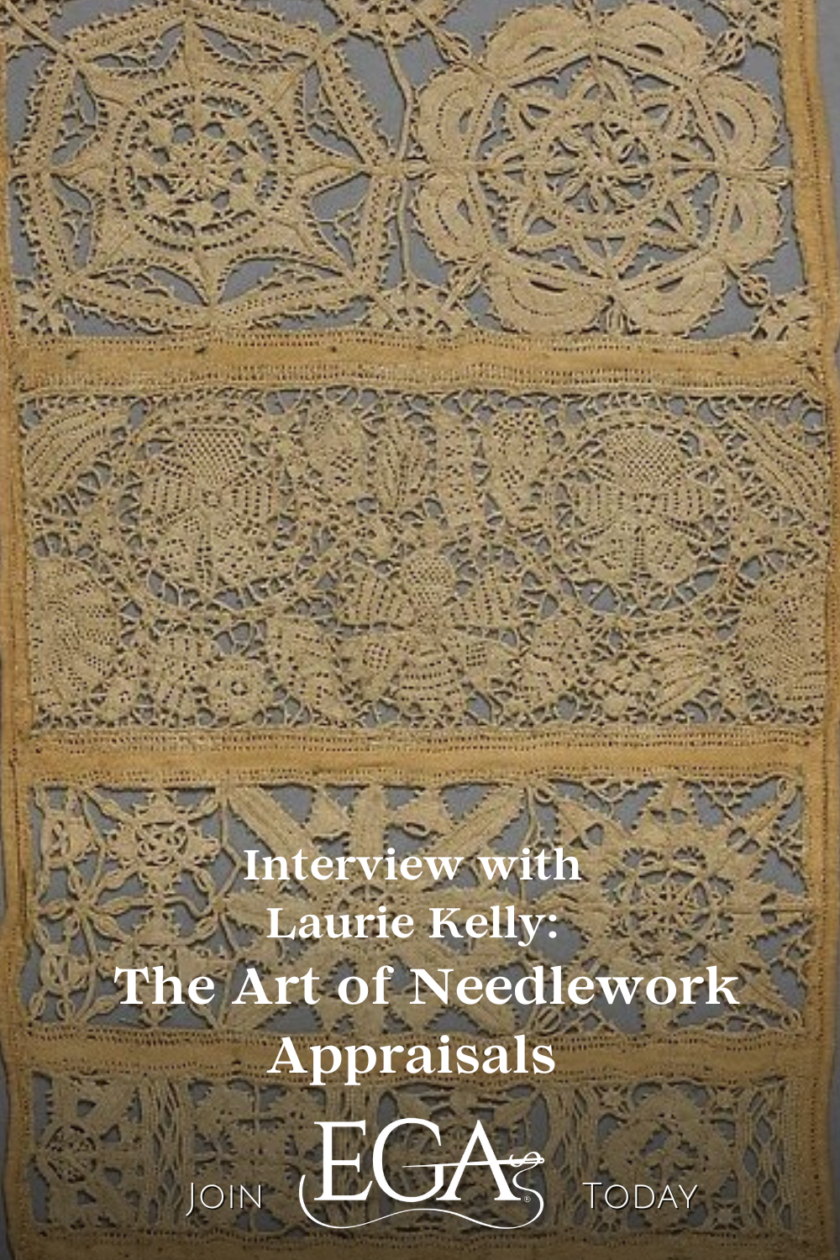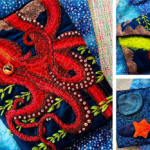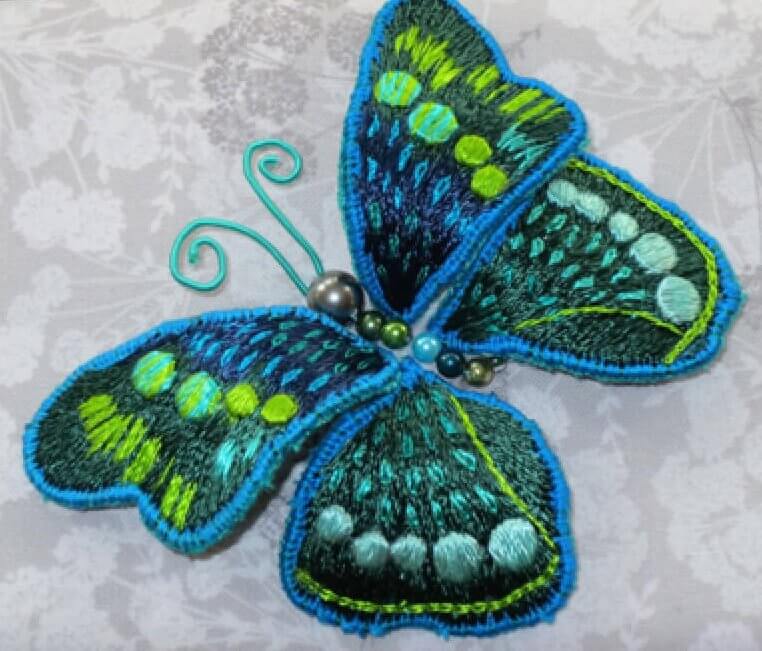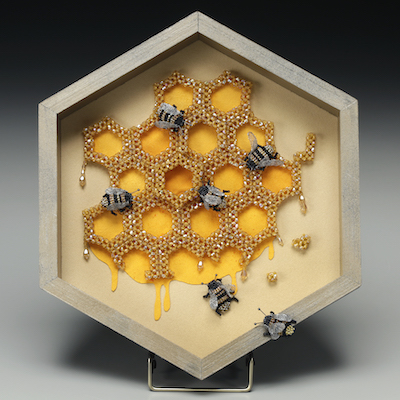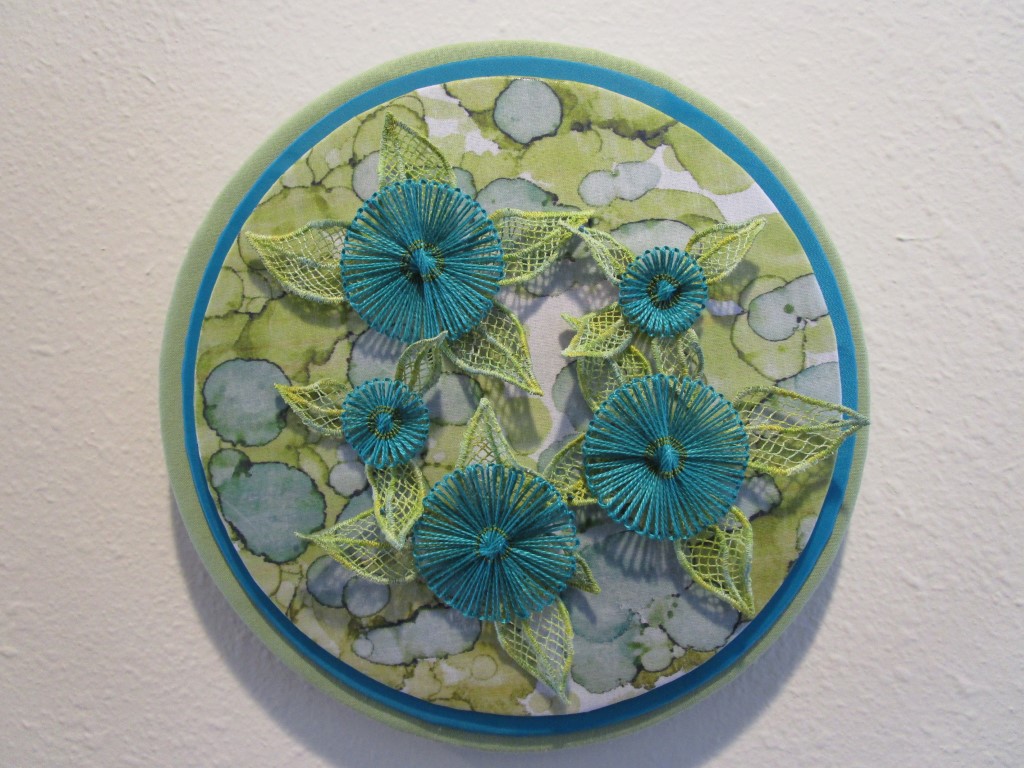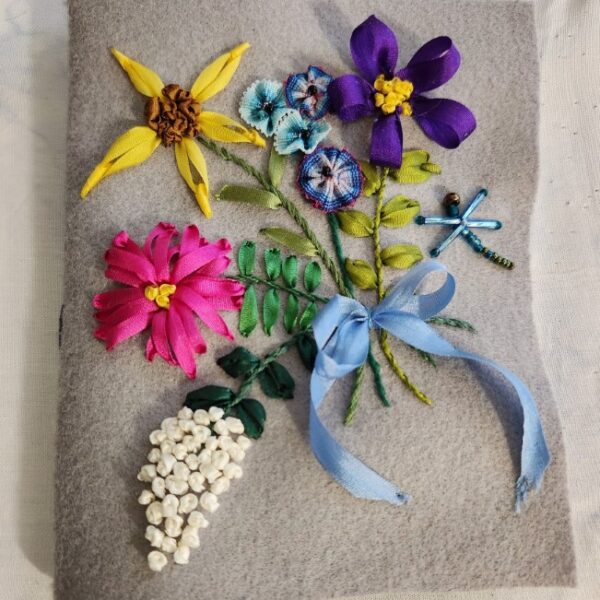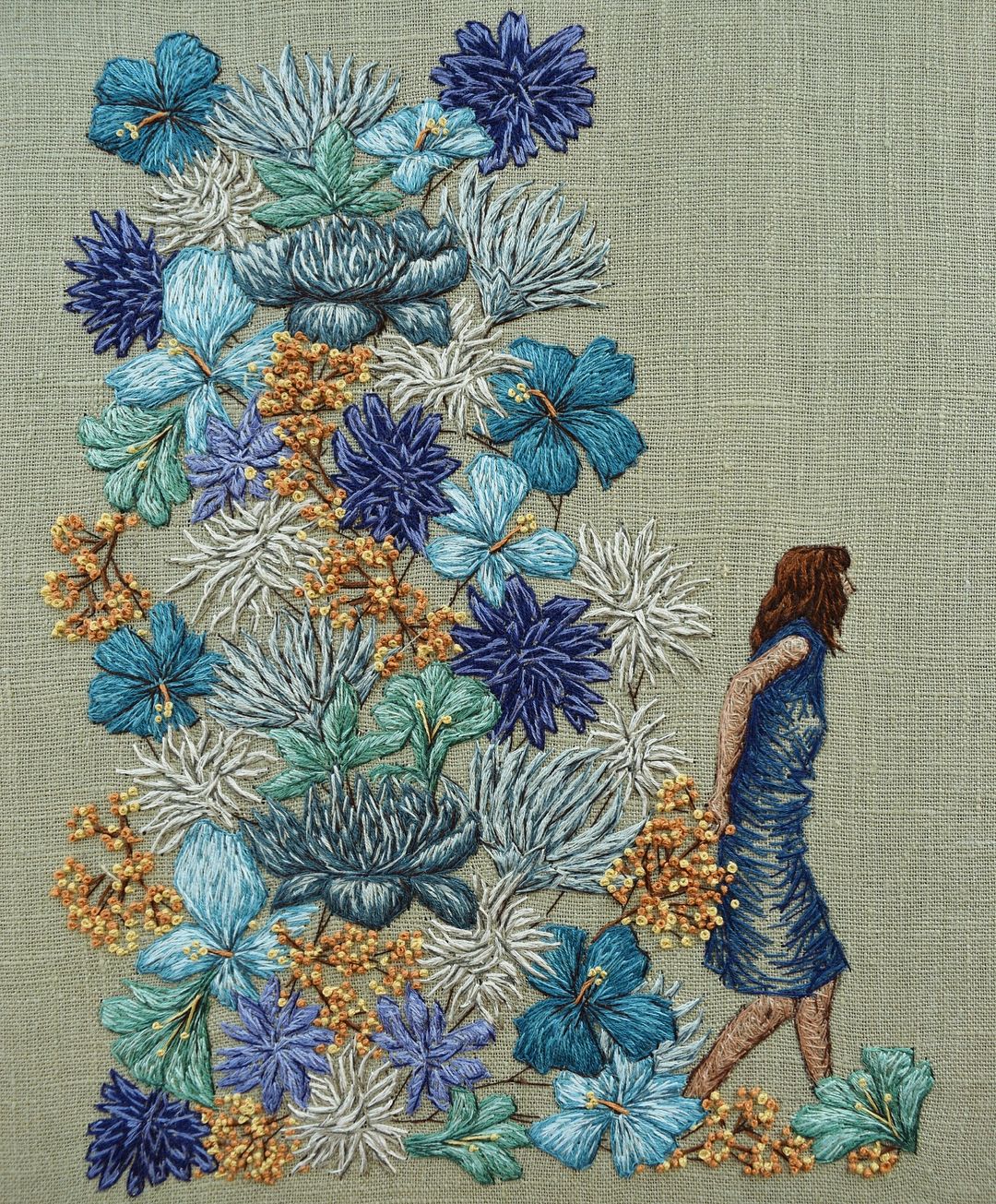
Have you ever considered having your needlework appraised? We sat down with Laurie Kelly, needleworker and professional Personal Property Appraiser specializing in needlework, ahead of her virtual lecture on The Art and Science of Appraising Needlework, to learn more about appraisals. Laurie’s work goes beyond simply assessing the value of embroidery; she shared some intriguing details about the historical and cultural significance of certain needlework motifs, the specialized challenges needlework appraisers face, and how appraising as a practice is as much about the appraiser’s understanding and analysis as it is about the needlework in review.
What inspired you to become a personal property appraiser—and why needlework in particular?
First, I am a longtime needleworker (particularly canvas work) and I thought that being an appraiser would add another dimension to my appreciation of needlework (It certainly did). As a longtime ANG member, I became familiar with their Needle Arts Appraisal program and launched my ANG training upon retiring from a 35+-year career in the Federal Government.
Second, I have always excelled in analytic work and the appraisal practice is fundamentally analytic. I was keen to learn new skills, marry them with my love for needlework, and apply them to an entirely new field—just for the fun of it!
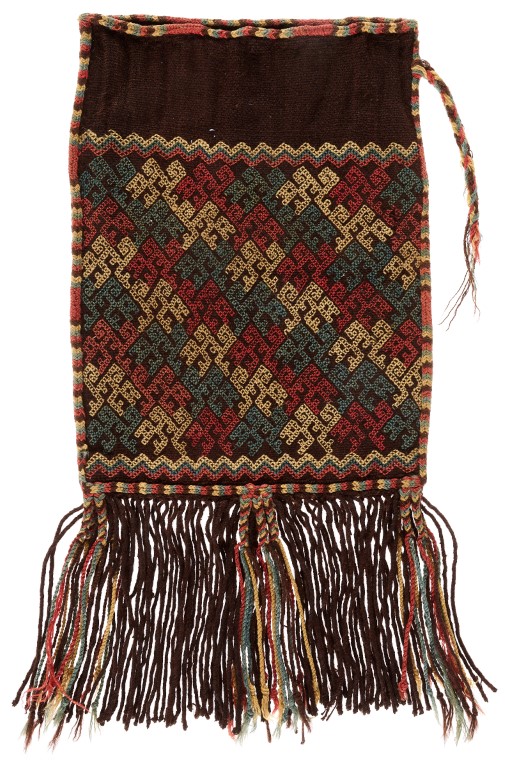
Did you learn anything surprising in your journey to become a personal property appraiser specializing in needlework?
The ANG program includes intensive connoisseurship training, to include needlework around the world, across time and all techniques done with needle in hand. As an appraiser-in-training I only scratched the surface of learning about the huge universe of needlework and embroidery. Ever since, I’ve been on a lifelong learning adventure about its historical, decorative, and cultural roots.
While building connoisseurship of needlework, I kept seeing motifs that seemed to show up all over the world and in many eras. I wanted to understand why that was the case. I studied four such motifs—the tree of life, the two-headed eagle, the 8-pointed star, and the pomegranate. It turned out that these motifs have very deep cultural roots and meanings that in some cases go back several millennia. They became globalized via the abundant and highly lucrative trade in decorative textiles on the Silk Road, and later via the European trading companies in the 16th to 18th centuries. Over time, as the motifs gained worldwide decorative appeal, they eventually lost their cultural meaning. I wanted to tell that story, and that led me to create my first lecture, “The Well-Traveled Embroidery Motif.” I have since gone on to develop two additional presentations that aim at unlocking the meaning in embroidery. I list all four of my presentations at the end of this blog. Be sure to check them out!
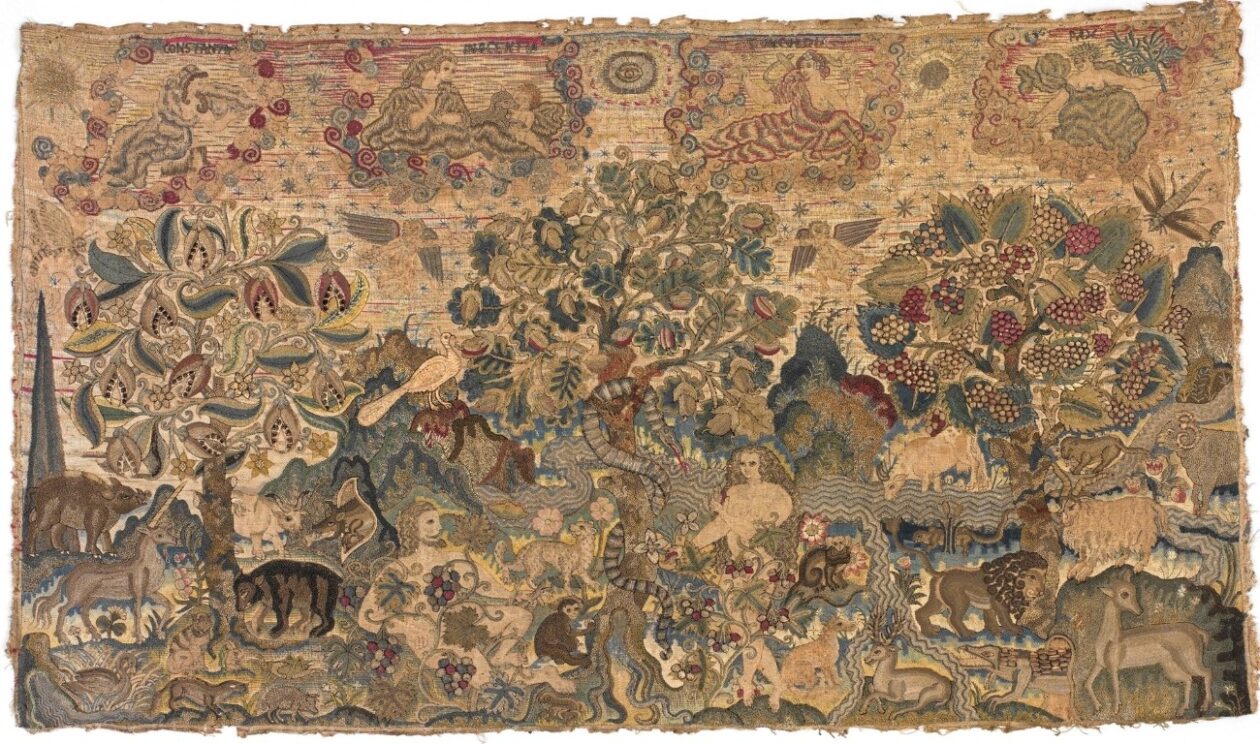
Incidentally, I joined EGA because it is about all needlework (not just needlework on a countable ground) and I have learned a lot from participating in my Chapter meetings, seminars, reading Needle Arts, and attending regional and National lectures. The Guild has helped build my connoisseurship and my membership is an important asset.
What is the most challenging aspect of appraising needlework?
There are challenges in all appraisal fields, though needlework has some specialized challenges. First, the appraiser needs to “read” the property to appraise it. What I mean by that is that the first step in appraising a property is to identify it. The entire appraisal report rests on this crucial step, and it’s not always straightforward (What techniques does it include? When was it made—in the 16th C. or is it an 18th C. reproduction? What is the subject matter? What is the source of the design? Which materials were used? Are the materials original?).
Subsequent steps in the appraisal process entail figuring out which characteristics of the property give it economic value and using those to conclude an opinion of value. The rules and standards of the profession give the appraiser a roadmap to the process, but the details of “reading” the property, deciding on its characteristics of value, deciding where to collect data, deciding which data are relevant, analyzing the data, and concluding a value are all up to the appraiser to get right.
In addition, no two needlework properties are alike, and therefore each appraisal assignment is different. That means each assignment is approached from the ground up; there are no formulae, no look-up tables, no guidelines to value any type of needlework property. Each assignment entails defining the problem correctly, doing research and fact finding, and making the correct analytic judgments along the way. The measure of success is to conclude a credible value for the client, whether the appraisal assignment entails an insurance issue, charitable donation, estate division, or some other purpose.
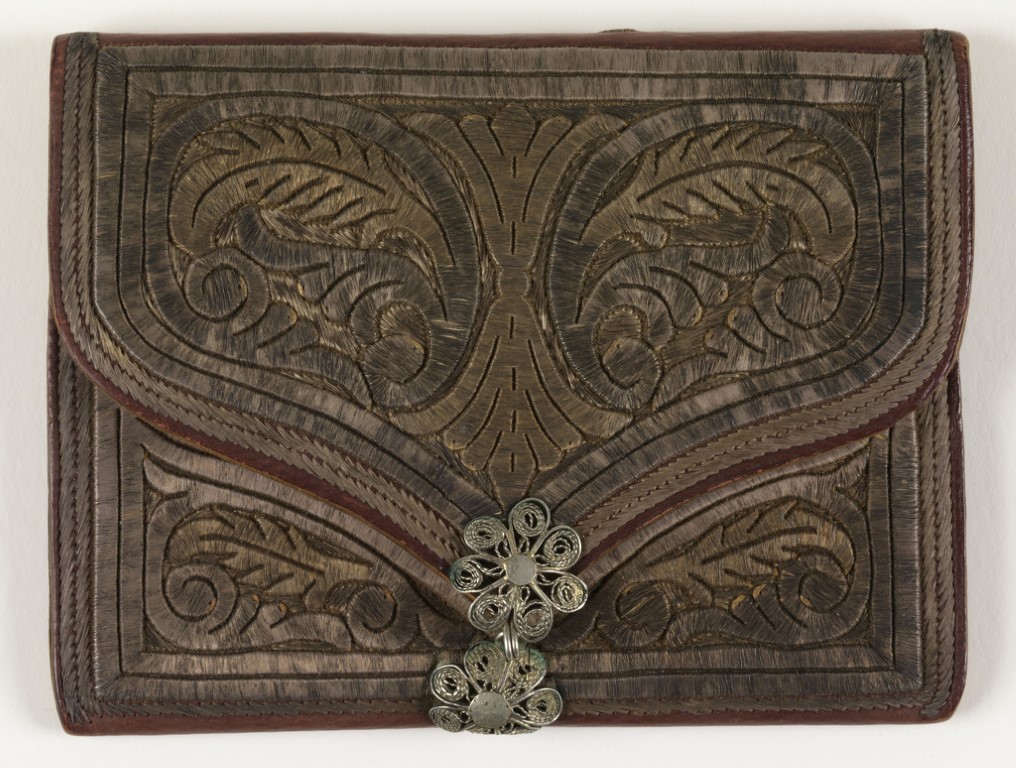
What do you hope stitchers take from your virtual lecture?
The purpose of my lecture is to give the audience an appreciation for how appraisers look at needlework to value it—what appraisers look for, what appraisers need to know, and that they follow a process to translate the observable characteristics of a property into an appraised value. Along the way, I address elements that add to value and elements that detract. I talk about some of the challenges. Equally importantly, I try to give the audience some perspective on the significant investment they have in their own needlework.
Should we have our needlework appraised?
Appraisals are not only for antiques! There is considerable value in contemporary needlework, especially of the quality that EGA members produce. That said, it does not make economic sense to appraise—and insure—our entire body of needlework. But I recommend consulting an appraiser concerning a project that is large, complex, has expensive material and labor involved, or maybe a piece that has won important awards.
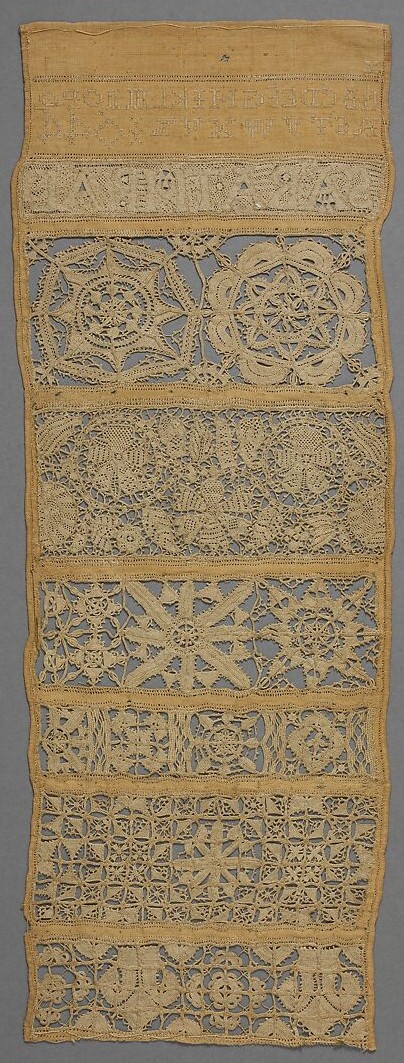
Examples of such projects are a set of needlepoint dining room chairs; an upholstered chair or sofa; or a project that is large, unique, and meaningful to you. Once appraised, you have the basis for additional insurance that protects the valuable articles against loss, separate from your homeowner insurance policy. That is to say, if left unappraised and uninsured, that chair with needlepoint upholstery over which you labored for years will only be replaced at a loss based on the value of an ordinary chair of similar style. Your investment in design, stitching, and materials will be lost.
Second, a charitable donation of your needlework to a museum, or perhaps to the EGA National collection, will probably also require a formal appraisal. The basis for any tax deduction for that charitable donation depends on having a formal appraisal prepared whenever the (fair market) value exceeds $5,000.00—and that may not be a high threshold for a significant needlework property.
Yet another circumstance that may apply to this audience is class models designed by professional teachers. This is a special circumstance that may involve a personal property appraiser working in conjunction with a business-valuation appraiser. The two would work together, with the business appraiser determining the value of the business and its income stream (e.g. income from classes and intellectual property), while the personal property appraiser would determine the value of the needlework-related assets, such as class models, the designer’s stash of materials, the value of the designs themselves. Unfortunately, more than one national teacher/designer has suffered severe business losses in recent years from natural catastrophes.
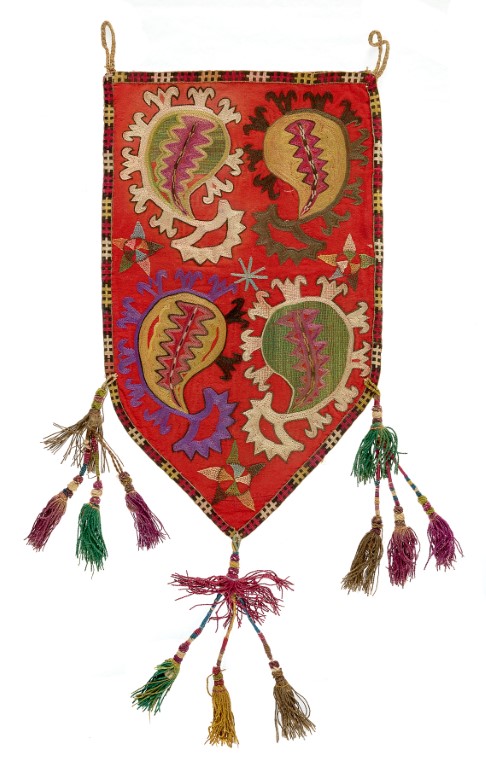
What if I only want to know a potential sale price for a piece of needlework—do I need to have the property appraised?
I get this question all the time! I assist many clients with determining a potential sale price for, say, a sampler or a collection of samplers. The process of determining a market price is a narrow question and much less expensive to produce than an appraisal report. Call me. I offer a free 30-minute consultation for any of my services.
What else do you want the audience to take away from your presentation?
I recommend that we stitchers create a record of provenance for each piece that we complete. That record should consist of a good photograph of the piece and maybe close-ups of details. It should also include the title of the piece, the name of the designer, the name of the stitcher, the medium (e.g. painted canvas, kit, charted design), the date of completion, identification of the materials and stitches used. Stitchers may add other information that they think is relevant. It’s a good idea to print a copy of the record and attach it to the back of a framed piece (i.e., a plastic pouch can be added to the back of the framed piece) and to gather all of them in an electronic file. (See 2 sample pages below).
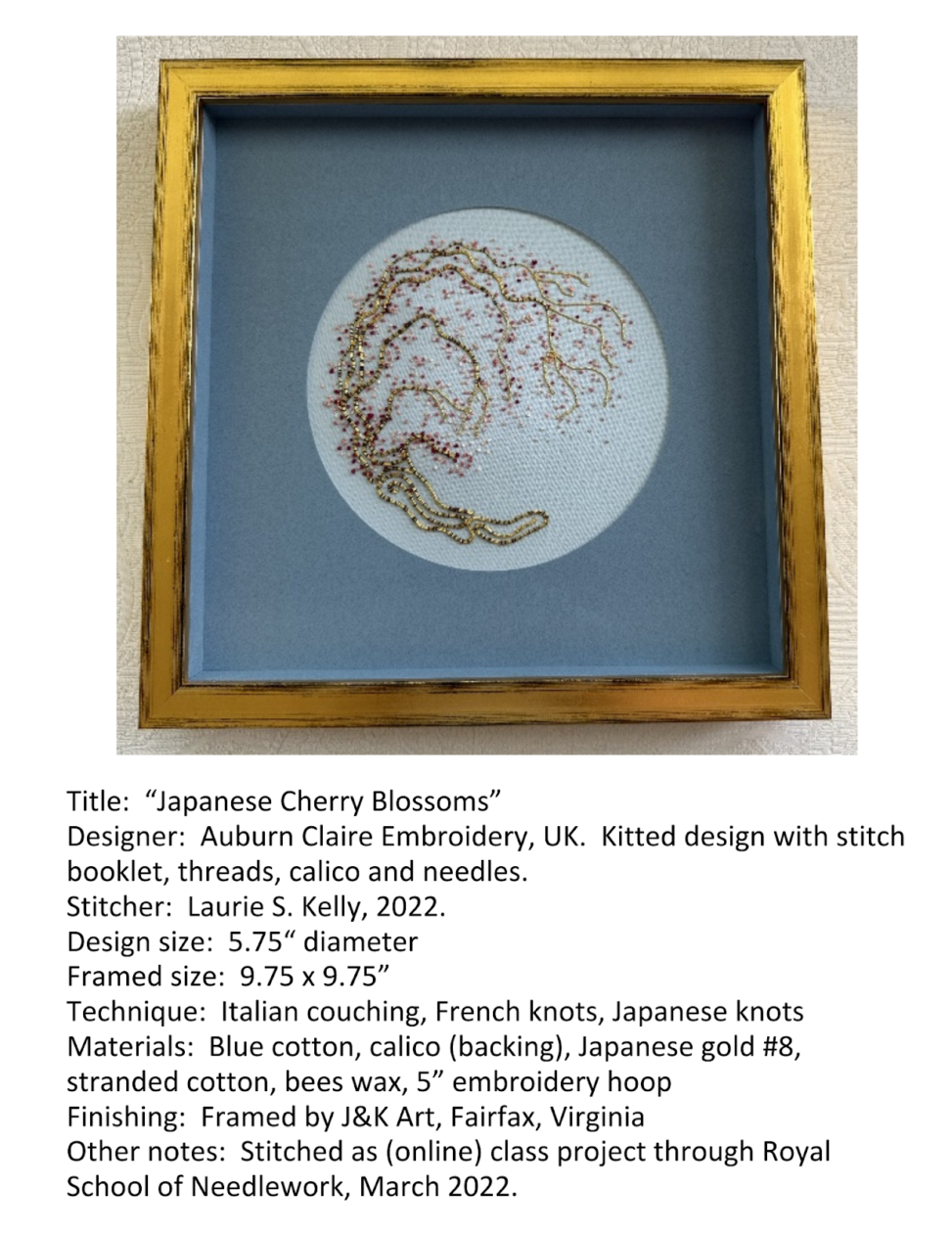
Why bother? First, it’s nice to be able to look back at your own body of work from time to time. It may inspire you and show how much your abilities and tastes have changed. Another reason is to identify your needlework for future recipients. If you pass your work on to loved ones you are building a very personal legacy. Especially if you stitched a piece to give to someone, do them the honor of giving them information about it (Why did you choose it for them? Is it a gift to commemorate an anniversary, birthday, or other life event?). Do not think that no one will care; they will. Moreover, that information adds long-term monetary value.

I’ve had interesting discussions about this with my audiences. For example, a needlework finisher told me that she lined needlepoint Christmas stockings to give to her grandchildren with satin from her wedding gown. She included a handwritten card inside the gift that explained why she chose the stocking for the child and she explained the source of the stocking’s lining. In so doing, she created a precious family legacy that was uniquely hers. As a stitcher, I loved her creativity, and as an appraiser, I applauded her vision. Consider how you might make future gifts of needlework especially meaningful to those who are lucky enough to receive them. As a final point, if someday that needlework ends up in an appraiser’s hands or an antiques auction, the information that you record will likely contribute to its value.
Where can interested needleworkers discover more of your work and upcoming projects and events?
I offer four lectures as of 2025. They are all about one hour long each and they are perfect complements to Chapter agenda.
“The Art and Science of Appraising Needlework” gives insights into how needlework is valued by professional appraisers. The presentation reviews the process for appraising personal property, the valuation methods that are commonly applied to needlework, and the “keys” to concluding value. Participants walk through short case studies that illustrate how the appraiser applies both connoisseurship (“art”) and technical methods (“science”) to conclude value. It shows that the huge variety in needlework forms, eras, and regional variations makes every appraisal assignment a unique challenge.
“The Well-Traveled Embroidery Motif: Trees, Birds, Stars and Fruit” illuminates the origins of four ubiquitous motifs—the tree of life, the two-headed eagle, eight-pointed star, and the pomegranate. The presentation shows that stitchers in ages past embroidered these into clothes, household items, and decorative and ceremonial objects. The motifs traveled on textiles around the globe and across the centuries. The presentation shows stunningly beautiful examples of the embroidered motifs and their variations. Participants will take away the knowledge that motifs can help identify a piece of needlework, and in some cases, unlock its cultural meaning.
“The Well-Traveled Embroidery Motif Part Two: Motifs, Embellishments and the Evil Eye” reviews ancient and widespread beliefs in the power of the evil eye (and other evil spirits) that were thought to harm both humans and animals, man’s precious companions. This presentation surveys how motifs and designs, embroidery placement, and the addition of embellishments were used to protect wearers from such evil. It shows that these embroidery techniques have multiple and deep cultural roots, even though the belief in magical powers has today yielded largely to their decorative appeal.
“Needle Artists Speak Up…and Oh, the Stories They Tell!” is a presentation about needlework, though not about the craft itself or its decorative aspects. It is a presentation about the content of the embroideries; the stories that embroiderers tell and that give voice to their lives, passions, and causes. The artists speak to us from decades and centuries past with their views of our Nation’s founding and its early years, U.S. politics & amendments to the U.S. Constitution, and finally, wars. Their stories give us insights into events that are not often recorded in the conventional historical narrative.
I will have exciting new offerings in 2026, so stand by!
Check out the tab “Services” on the top right corner of my website, fancyworkappraisals.com, to see my lectures. Call me to schedule.
I also have a Facebook page: Fancywork Appraisals.
I look forward to your participation on June 14.
